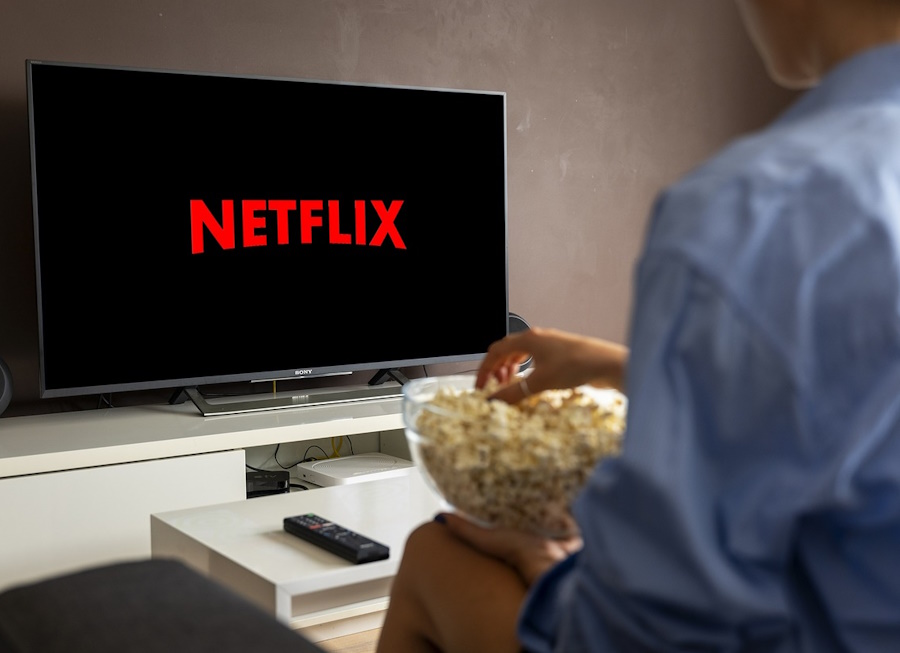Advanced technology has dramatically changed how people watch television over the last 70 years.
A traditional television set was a large, heavy cathode-ray tube (CRT) television with only a few channels available through an antenna.
It took about two or three people to lift or move a CRT television because each weighed hundreds of pounds.
Older televisions only had black-and-white picture quality and were expensive for the average family to purchase.
It was uncommon for an American family to have more than one television in their home because it was expensive.
But as television technology improved, more people started buying multiple televisions for their homes.
Until the 2000s, most cable companies only offered one hundred channels on conventional cable boxes.
But when they upgraded to digital cable box technology, customers could conveniently access hundreds of channels from their digital cable boxes by scrolling through a digital menu screen. They no longer had to keep changing channels to find something good to watch.
The consumer marketplace now has lightweight flat-screen televisions, smart televisions, and digital streaming services with unlimited channels and entertainment options.
The newer generation does not know how lucky they are to have today’s television technology.
Let us review the most recent technologies that have changed how we watch television forever.
Digital Streaming for Movies and Television Shows
Digital streaming services have been the most transformative in how people watch television.
They eliminated the need for cable or satellite television service because you can stream or download all your movie and television content through a high-speed internet connection to a computer, flat-screen television, or smart television.
Netflix was one of the first major content streaming service providers. It made video rental stores like Blockbuster obsolete because people could now stream new and old movies and television shows from the comfort of their homes.
There was no need to wait for a video to be available at a rental store because streaming ensured immediate access to the content when it was released.
Due to the high popularity of Netflix, other entertainment companies began competing in the digital streaming marketplace by offering their own digital content streaming services.
Now there are content streaming services like HBO Max, Roku, Hulu, Paramount Plus, Disney Plus, and Amazon Prime.
Media Streaming Devices
Smart televisions were expensive when first released for sale to consumers. By that point, many people had already replaced their classic CRT televisions with flat-screen televisions because they were lighter and offered better picture quality than CRT televisions.
Unfortunately, the one thing flat-screen televisions did not offer was smart technology. They still required a cable box or HDMI computer connection to view movies and television shows.
That all changed after the invention of smart televisions because they were built with Wi-Fi connectivity to stream content from the internet wirelessly.
But it would still take another 5 or 10 years before smart televisions became the new norm in American households.
In the meantime, media streaming devices were invented to benefit flat-screen television owners who lacked Wi-Fi connectivity in their televisions.
A media streaming device lets users turn an ordinary flat-screen television into a smart one.
It resembles a small USB flash drive that sticks into the USB port of your computer. But instead of inserting the media streaming device into the computer, you stick the USB end into the USB port of your flat-screen television. That is how the flat-screen television transforms into a smart tv.
Amazon Fire is one of the most popular media streaming devices. It can link your flat-screen television to your Wi-Fi connection to stream digital content from Amazon Prime, HBO Max, Disney Plus, Hulu, and other popular streaming services.
However, media streaming devices seem obsolete because smart televisions have become cheaper and more popular with consumers.
Smart Television
We are at a point where smart televisions exist in most American households. People no longer depend on cable boxes, satellites, or media streaming devices to watch their favorite movies and television shows.
Instead, they can connect their smart televisions directly to their Wi-Fi connections and stream their content that way.
Roku is a popular HD smart television brand due to its affordability for the average consumer.
It even offers live television channels and the ability to discover and add local, national, and international streaming channels you may have never heard of before. Why would anyone want to go back to basic cable after this?
Smart televisions offer speed, convenience, and variety to consumers. As a result, the way we watch television has only gotten better.
![]()

